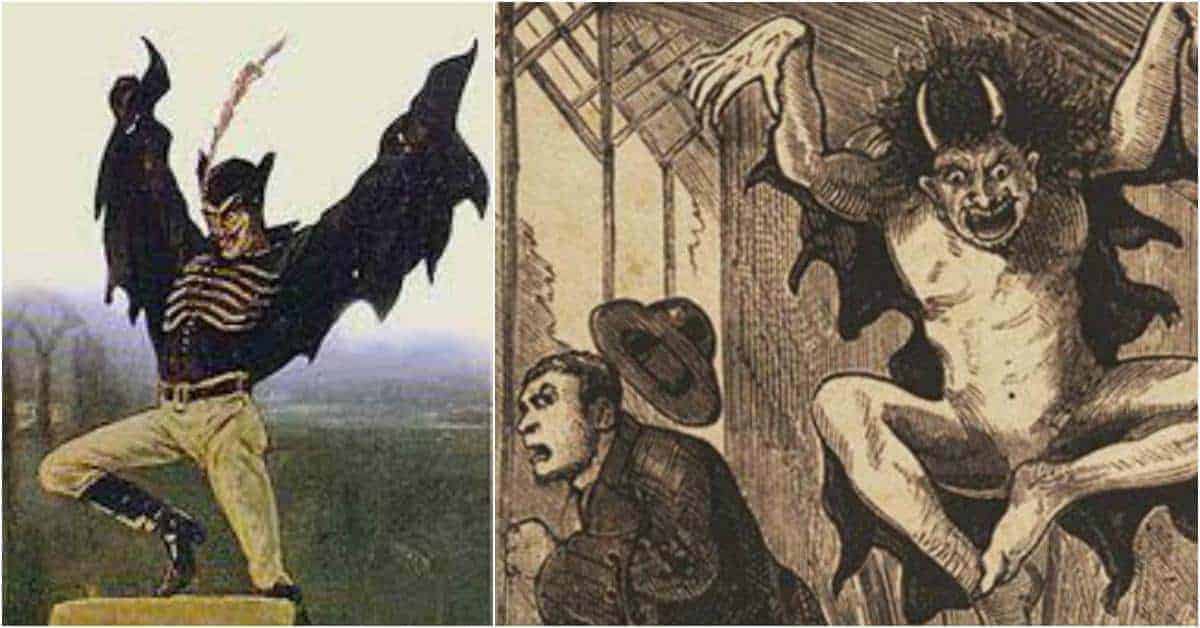Spring Heeled Jack is a well-known part of Victorian folklore. He was first sighted in 1837, and dozens of witnesses claimed to have seen him over the next few decades. Those who saw him say Jack had eyes like red balls of fire and clawed hands and he apparently could make jump incredible distances while also breathing fire. The last sighting was in 1904 and while tales of his remarkable agility and fire-breathing prowess are obviously complete fiction, was there really some kind of caped mischief-maker, or a group of them, causing havoc on the streets of Britain?
Spring Heeled Jack Leaps into Folklore
The first mention of the creature came in 1837 when a businessman in England’s Black County area was stunned when a cloaked figure leaped at him from the darkness in a local cemetery. It proceeded to jump over the high gates, and the frightened man ran away as soon as possible.
His story wasn’t believed until October 1837 when a servant girl named Mary Stevens had a close encounter. She was walking through Clapham Common in London when suddenly, a strange creature jumped at her from a dark alley. He grabbed her tightly and began kissing her while also ripping off her clothes. Stevens later claimed that her attacker touched her body with ‘claws’ and said they were as cold and clammy as a corpse. She screamed, and the noise alerted a crowd. The attacker fled, and a search party was unable to find any trace of him.

The bizarre creature struck again the very next day when he leaped in front of a passing carriage. His actions caused the driver to crash into a lamp post. He was lucky not to die, and several witnesses report seeing the figure, clad in black, escape by leaping over a nine-foot wall. He was apparently babbling and laughing maniacally. The media of the day quickly latched onto the story and began calling the creature ‘Spring Heeled Jack.’
The Legend Grows
The next famous encounter with Spring Heeled Jack occurred on February 19, 1838, when Jane Alsop heard someone pounding on her front door. She answered and saw a man in a large cloak who claimed to be a police officer. He told her that he had caught Spring-Heeled Jack in the lane outside and needed someone to bring him a candle. She followed him out, but when she gave him the candle, the creature threw off his cloak and revealed a frightening face complete with red eyes.
Alsop claimed he breathed blue flames and tore at her clothes with his metal claws. She ran back home, and her father and sister managed to pull her inside, but not before Jack slashed her neck and arms. Just one week later, Jack attacked Lucy Scales and her sister in London’s Green Dragon Alley.
The two women saw a man in a cloak standing in the alley; he suddenly leaped in front of Lucy and breathed blue flames in her face. She was blinded and fell to the ground. The girls later said he carried a lantern just like the police in London. The city was now gripped in terror, but the beast had only just begun.

